Designing a House For Expansion Later
I’ve been searching for books and info on how best to go about designing/constructing a house that is easily added onto. To be clear, I’m not talking about deliberately holding off on extending a Master Bath a couple of extra feet during initial construction, only to go through 3x the expense and trouble later, but building techniques that might allow for a doubling of the original square footage as seamlessly as possible. In other words, I’d like to build my dream house in pieces.
Certain aspects seem obvious, like a sub panel that would feed the new “wing” without running additional wiring in the original structure, and large clear span openings in the “marriage wall” of the original structure that might temporarily have non load-bearing studs just close enough to attach drywall/insulation/exterior finish to. Obviously, the new section would likely require it’s own HVAC system, since the original would be horribly oversized until the new section of the house is in place, likely years down the road.
All books found using the word “Modular” deal with buying a pre-assembled home that was built in pieces off-site, and searching using the word “Addition” gives me results that cater toward adding on to an existing (already designed) structure. Can anyone steer toward some more specific information? Thanks in advance.
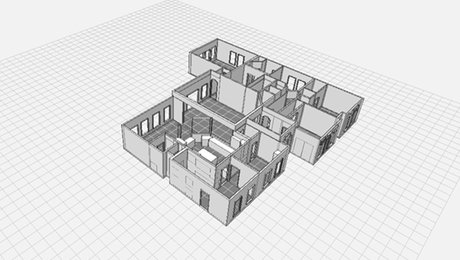
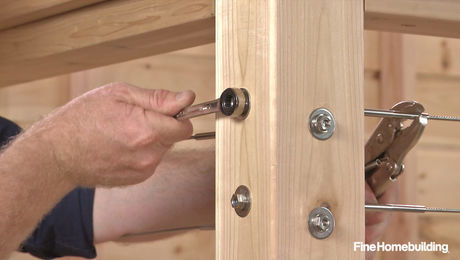
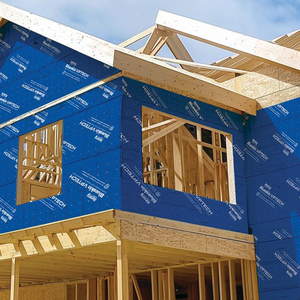
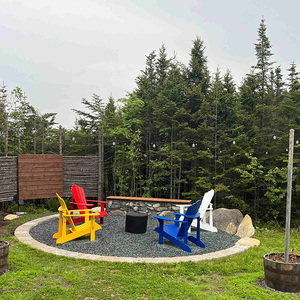

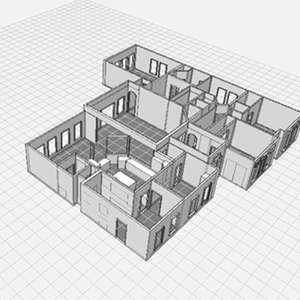













Replies
Find out your properties setbacks, and any allowances for heights of structures. These vary from area to area so that would be my first step if I were in your shoes.
Then placement of septic and drainfields if you aren't hooked up to the city. Would be next.
If I was planning on going up another story I'd use floor trusses for ceiling/floor joists, then knee walls and rafters on top. The large floor trusses allow for HVAC trunk lines to be ran through them, along with drains and vents. They can clear span long distances but have to be engineered for that and your manufacturer would do that for you.
If I wanted to add a few feet to a room, I'd probably cantaleiver the floor joists past the foundations boundaries.
Woods favorite carpenter
Matt,
Thanks for the response. There are many more specifics that I didn't go into, as I didn't want people looking at a "book" and deciding that my post was too long to read. I was hoping that someone would direct me to a book or video that would address the process in a more detailed way than I have, or at lest give an indication of how I would go about modifying a larger house plan to be able to build it in sections.
Nice P&B garage, BTW! I actually live in a 600 sq ft post and beam that will either have to be moved off the property or torn down when the new house is done. (Some day!) I already have power, water, and city sever, so extending them shouldn't be a problem. I have a lake view from the spot where I want to build and am limited to 35' in height, from the "Average finished ground level." My lot is 60' wide and ~155' long, and my setbacks are 30/5/5/10. I will be building on the "10" end, as that's the highest terrace. My current house is on the "30" end, roughly centered on the 60' width.
You can always build in sections, but with each section you need to offset the walls, or you have to redo all the siding and shingles.
So offsets and different roof lines make the additions possible without too much collateral damage so to speak. Woods favorite carpenter
You can always build in sections, but with each section you need to offset the walls, or you have to redo all the siding and shingles
Yeah, but I'm concerned about the complexities of tying in on a three-story scale. I wouldn't think twice about it with a rambler with a simple gable. I'm not sure about the framing details on the tie-in. Just make sure my "old" joists are running toward the addition and butt them together?
Interesting project. I don't know that the goal needs to be a "seamless" expansion. I love the Maryland "telescope" style house, and have built one (in Maryland) to look as if grew over time. Traditionally, it was a one-room cabin, single gabled roof, then a story-and-a-half addition to one side, still in line, maybe with dormes on one side.
As the family became larger and/or more prosperous, a 2 over 2 section was added to that; center hall if a little more ambitious, or even a 4/4.
Difficulty my in-laws have living in that house have is that it's a long "L" of a house, only one room wide - mostly no real halls; have to go through rooms to get to others (not the bedrooms).
So, I would really think about circulation, both now and later. Also, scale the initial parts and room sizes according to the final plan.
Be a cool project to noodle about!
Forrest
Forrest,
One of the tough parts of this project, is that my first "module" will need to be three stories in order to maximize the view. That makes for a pretty big module, unless I'm building something that resembling a guard tower. In addition, I'd like to carve a two-car garage into the raised terrace that I'm building on, and set the house on those 8' concrete walls since I can't go back after building a cheaper crawlspace foundation. The kicker is that building a separate structure for a two-car garage will probably be more expensive than the upgrade from stemwalls/crawlspace to full-height poured walls and all of the extra dirt removal that goes with it. I have basically ruled out building a structure that needs to be expanded vertically on an existing footprint due to the necessary labor involved in raising an already-finished roof and adding floors. So, this certainly gets me away from the "L" shape you spoke of, as I need to be as symmetrical as possible with my LxW dimension in order to keep material costs down, at least initially with this first large module. I think that building a 28x28 - 32x32 module that is as unfinished inside as possible might be the way to go. I'm a fan of the "Modern" look, so having a box as a the largest module might turn out O.K. architecturally. I totally respect the traditional East Coast styles and the craftmanship that goes into them, but their style (dormers especially) are not for me. Please keep up the suggestions and post pics of projects you've worked on!
mike....
building to catch a view is sometimes like chasing a rainbow
we live on an island.. so the "water views" all demand a much higher resale price
every house is built to maximize the view... but the view is continuously obscured by neighbors building high in front of other neighbors...this leap-frogs right up the hills
the other thing that has happened is that many tree ordinances have been passed to prevent cutting
trees that were 20' are now ( 20 years later ) 50' and many houses can no longer see their neighbors, never mind the view
Mike Smith Rhode Island : Design / Build / Repair / Restore
I understand, Mike. In my case, even without the view, the proposed placement is ideal for reasons of privacy, maximum utilization of land, and simply because it's the "high ground" on my property. Getting as far away from the road is almost as big of a deal as the potential view, and putting the house as far back on the lot as possible opens up new opportunities as far as parking and landscaping. The structure I live in now is "ideally placed" to screw up any and all possibilities as far as having a garage or a workshop that can be driven up to. It's very frustrating to live on a decent sized (.22 acre) piece of land is so limited by the current house placement. Never mind the horror of living in 600 square feet! :)
oh, the horror ! ( 600 sf )
hah, hah,hah..... i do know what you mean... it is funny that one man's horror is another's vision of paradise
and 60 x 155 is a minor dude ranch in the land of 50 x 50 lots
i'm trying to envision this 3-story cube
if you can bring the drive around the house, then it would be fairly easy to get ground-level 2d floor access
i would like something to soften the 3-story watch tower effect
is this your "carry me outta here in a pine box house "...... or something you plan on selling in 7 years ?Mike Smith Rhode Island : Design / Build / Repair / Restore
Well, I know people always say things like, "This is the house I'll die in," but I'm never so sure as to predict the future. The house has to be something that adds value to the property, so it can't be so oddball that people see it as an eyesore, nor it my desire to make it such. When I mentioned the shape, I was going for the most bang for the buck, but that doesn't mean that it can't have some architectural details that go somewhat beyond the footprint. I just don't want something that sacrifices 30% of my square footage with a radical shape. I'm all for bump-outs and bay windows and such. As far as the driveway coming up to the 2nd level- That would prohibit an additional 3rd or 4th garage bay under the future addition.
well, whe you get some pics of the preliminary plans, put them in .jpg format and post them
you'll get a lot of opinions... some of which may even be helpfulMike Smith Rhode Island : Design / Build / Repair / Restore
Thanks, Mike. I haven't even picked my design software yet, so it will probably be awhile. It's all just an idea in my head at this point. :)
I have a photo thread going now that might interest you.
Matts garage. I added a room above my garage, might be something you'd be interested in for future expansion.
Woods favorite carpenter
Try using Exapandable House Plans. That seemed to get the most on target hits. Thins like expanding house plans got things like The House(congress) plans to expand ...
But you try other other keywords. Expanding House Plans Construction was a little more on target.
And you might try amazon books and then uses expanding and expandable alow with house in their book search.
I believe that A Pattern Lanquage discusses this (been along time since I read it). But it will only be generalalities, not designs.
Here are a couple of suggestions.
Plan for the garage to be converted space. That is fulll frost walls and vapor barrier and insulation under slab.
Plan paths or put in conduit or chases for expanding utilities into the new space.
While you are building up at the start you don't have to finish all of that space or it could be planded for conversion. For example the top story might be a childrens playroom, but already have the piping so that it can be coverted to a master bed/bathroom when the addition is put on.
The house that I lived in for the first 10 years consisted of a "master" bedroom bathroom, kitchen with breakfast nook, small bedroom and small 1 car garage. This was build in 39. Now I don't have any idea of what the plans where, but the small bedroom opened into the LR so I suspect that was not the orginal plans.
In the MBR there was closet and in the back of the closet was a door to the attic.
When I was about 5 the house was remodeled and the attic stairs straightend out so that they went out the front of the house. And small bump out was added to from to make an entrance hall that opened into the 2nd floor stairs and the LR.
The small bedroom and garage was made into a larger DR and small office.
Dormers where added to the roof and the space was converted to 2 bedrooms and a bathroom.
.
A-holes. Hey every group has to have one. And I have been elected to be the one. I should make that my tagline.
Bill,
Thanks so much for your reply. I searched the terms and phrases you suggested and it seems that most of the results involve converting attics, basements, building partition walls to "make two rooms out of one," and other activities that re-conoider existing under-roof space. Unfortunately, the desire for hyperbole on the part of book marketing departments have diminished the meaning to the point where the meaning has been changed, not unlike the phrase "House Moving."
Your specific constructions were exactly what I'm looking for. Those are some excellent ideas and will add them to my list of ideas when I start my plans. Thank you very much for taking the time to respond with all of your helpful ideas.
I can't give you any specific references but you may want to look to the past.
expanding houses (IIRC) was the norm, hence Half Capes as an example.
also saw at Strawberrybanke in NH a house that when they took the back shingles off they found a fireplace ready for when the house was expanded. also believe the doorways were already framed but covered waiting for the expansion.
bobl Volo, non valeo
Baloney detecter WFR
"But when you're a kibbutzer and have no responsibility to decide the facts and apply the law, you can reach any conclusion you want because it doesn't matter." SHG
Hi Bob,
I do see a fair amount of very small old houses that were built with expansion in mind, but these are very simple designs that are boxy and modular in nature. It would seem that the older, more traditional styles with 90 degree walls would be easier to expand (like the "Shotgun," where you could build an infinitely long hallway with rooms on the side) than a thoroughly modern home with bump-outs, arches, curved walls, and multi-height ceilings. My guess is that anyone who desires such a house usually has the money to build it all at once. Unfortunately for me, I don't. The covered doorway frame is high on my list as well.